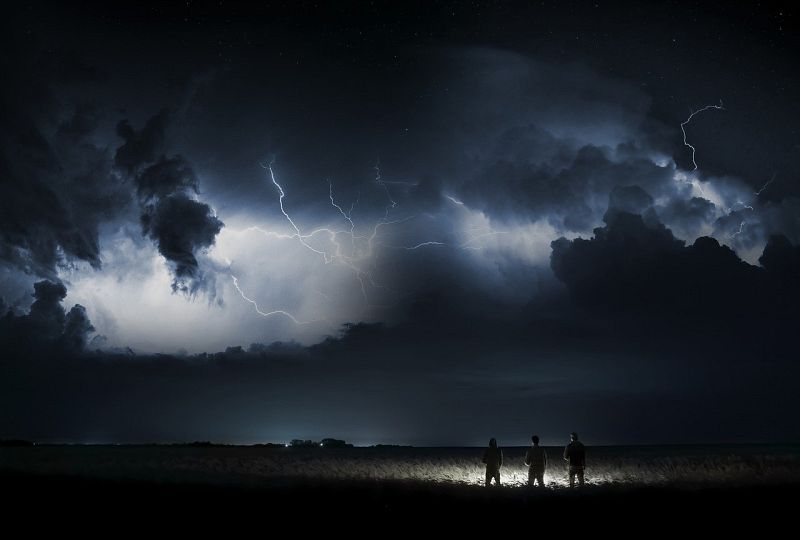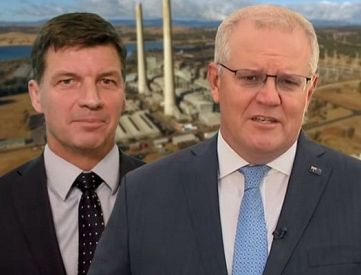As a person with a disability, I was not ready for climate change.
I have a physical disability, which affects my muscle strength and respiratory health. Like many people with disabilities and chronic illness, I’m dependent on power to maintain my essential medical equipment, like the respirators I use to support my breathing.
I have to use the respirators for life support for 18 plus hours a day and I cannot go overnight without them.
When a wild winter storm swept over the south coast of Western Australia on 21 June and caused power outages across the region, my life was placed in jeopardy.
Living in a rural area of the State, I’m used to having limited amenities and experiencing bad weather most winters. That’s why my family and I arranged a solar power system so that my medical equipment would always stay on, even in the worst storms.
But on the day of the storm that solar system broke down for the first time in 15 years and I was left with a finite supply of power to the respirators.
The storm struck during the evening and wreaked havoc along the Great Southern bringing 100 kilometre an hour winds and up to 30 millimetres of rain every hour.
The winds uprooted trees and tore off roofs and the downpour washed away major roads.
The greatest impact was that it left thousands of people without power across the region.
When the power went out it wasn’t just an inconvenience, it was a threat to my life and I wasn’t sure when it would come back on.
Large storms with heavy rainfall are common in winter and they often cause power outages. The problem is we are likely to experience more storms because of climate change.
The frequency and severity of severe weather events has been predicted to increase under climate change in Australia and the effects have already been felt.
The nature of severe weather events has always been a risk for people with disabilities. We are impacted in a variety of ways by natural disasters, the most common problem being that evacuation from a crisis can be difficult due to our medical needs and essential equipment.
Dependence on a stable supply of power is just one of many issues faced by people with disabilities every day, but it’s one that could be further impacted by climate change.
Western Australia is also experiencing a change in weather patterns.
Last year, the Great Southern was struck by another exceptionally severe storm in August and in May of 2020, a “once in a decade” storm event swept the coast after being triggered by a tropical cyclone.
Then in April of this year, WA was hammered by Cyclone Seroja, a category three storm that destroyed 70 per cent of buildings in Kalbarri and damaged surrounding towns.
Cyclones didn’t used to be a major concern in the south coast of WA, but Professor Jonathan Nott of James Cook University says the behaviour of cyclones is likely to change.
He said:
"Cyclone Seroja would be an example of what might happen in the future.
You can’t say Cyclone Seroja by itself was a function purely of climate change, because no one single event can be attributed to climate change."
Further, he explained:
“What climate change does is it changes the probability of extreme events occurring. And Seroja moving further south is probably an example of the kind of things we might see in the future."
Professor Nott has researched tropical cyclone patterns in the deep past for many years. His research has shown that cyclones have travelled as far south as Kalbarri before, but moving south is a change that might become more common.
Professor Nott surmised:
“Where we expect the expansion of the tropics to occur and the potential for cyclones to move further south in the Australian region to occur as well. We could potentially see more of that occurring in the future."
The good news is cyclone frequency is likely to decrease in Australia but when they do form, they are likely to be stronger than pre-climate change conditions.
Professor Nott said:
The frequency … of tropical cyclones forming appears to be decreasing and has been decreasing substantially since about 1970.
That fits with the projections for global climate models. But when they are able to occur. we could probably expect them to become more intense.
As a person with a disability, the changes in storm and cyclone intensity are concerning.
Worse and wilder weather means more damage to infrastructure and frequent power outages, events that are a problem for anyone.
But when you consider the impact on disabled people like me, they become life-threatening.
Eleanor Beidatsch is a disability and environmental rights activist, and a science journalist.
Related Articles
- Queensland: Beautiful one day, gone the next
- Energy grid must be protected from climate change-related weather events
- Morrison Government's climate policy is a national joke
- Kids prepare another strike against government climate inaction
- Not fit for purpose: Australia needs independent Climate Change Authority
 This work is licensed under a Creative Commons Attribution-NonCommercial-NoDerivs 3.0 Australia License
This work is licensed under a Creative Commons Attribution-NonCommercial-NoDerivs 3.0 Australia License
Support independent journalism Subscribe to IA.















